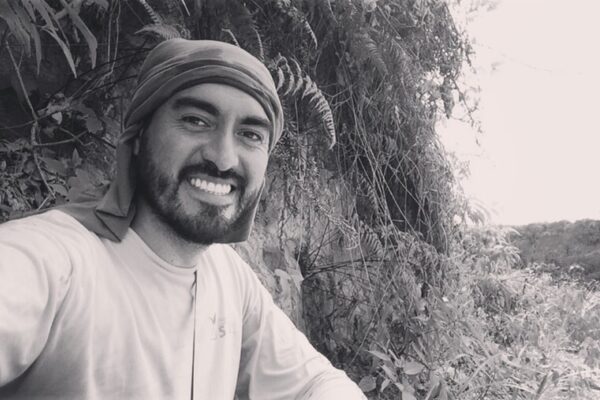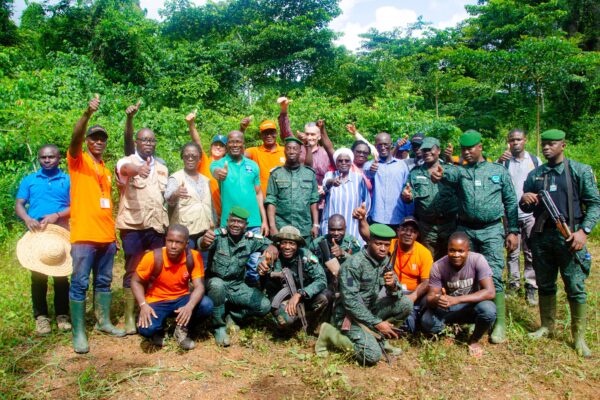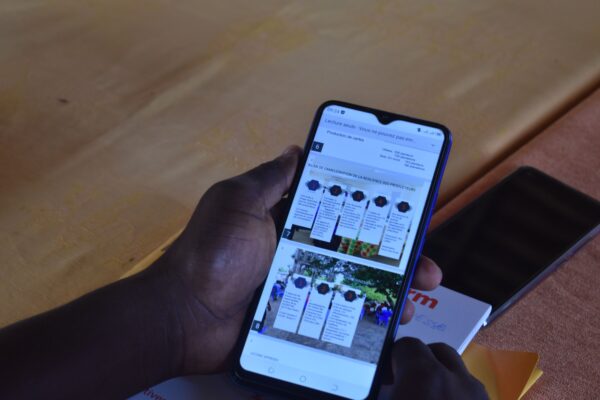A blog piece by Jotica Sehgal, Earthworm Foundation Director of Communications.
4 min read
There's hope for the forest – Real change is about sweat, tears, sacrifices and endless grit.
It's 40 degrees centigrade. Humid. Not the slightest breeze to bring some respite from the heat. I've travelled 24 hours, with many flight delays, to get to Abidjan. As soon as I land, I am whisked away by my colleagues to start our journey to the forest reserve of Cavally in southwest Cote d'Ivoire.
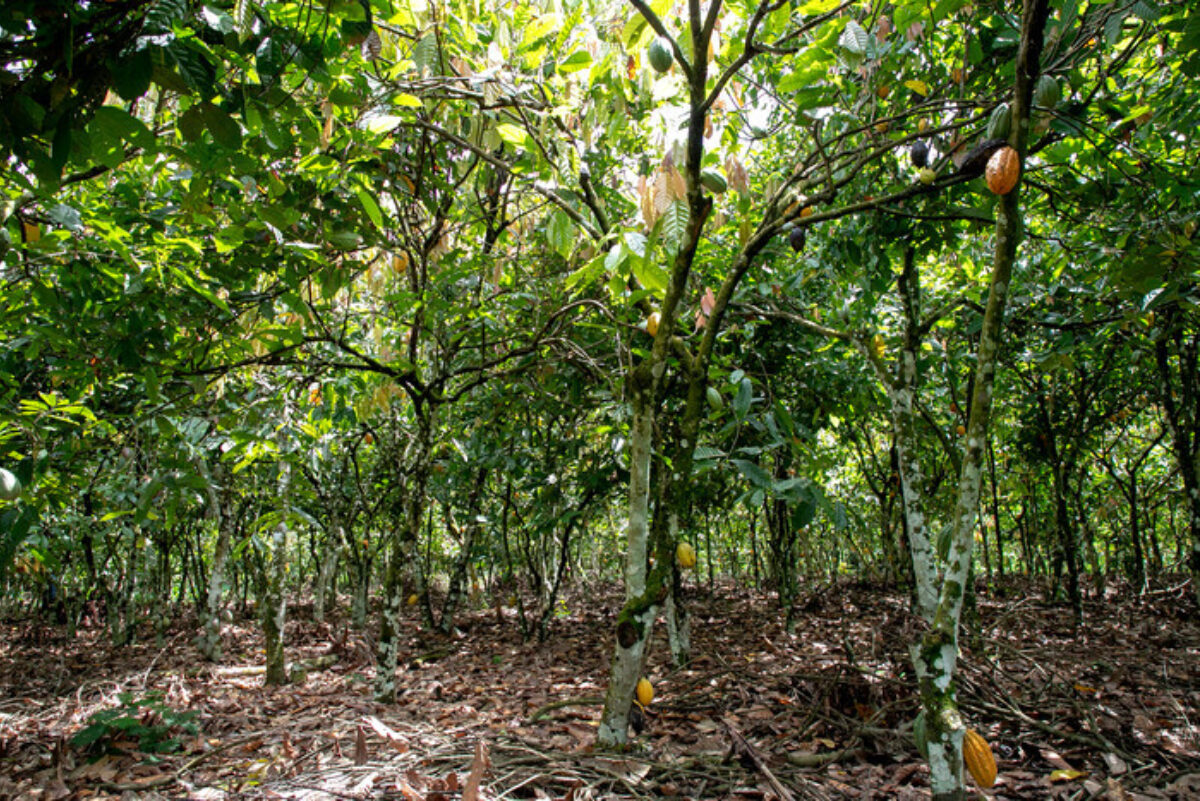
It is supposedly one of the last standing forests of Cote d'Ivoire, known for its rich natural and biodiversity value. And that's exactly what makes it attractive for cocoa farming. You also find coffee and rubber in the periphery zone around the forest.
Ask the locals in Cavally, and they will tell you why they go into the forest to plant cocoa despite the repercussions. Migration, soil health, lack of available land for agriculture and poor yields per hectare are the driving factors. The forest offers the local communities fertile land, better yields, and better cocoa quality.
I'm going to see all this firsthand and learn more about the project we have there. Funded by Nestlé, Touton, Cocoasource, Swiss State Secretariat for Economic Affairs and SWISSCO, this is one of Earthworm’s key projects in Cote d’Ivoire. The main aim is to protect and regenerate this forest that is being cut down due to the growing demand for cocoa while ensuring that communities who depend on the forest can earn a decent living.
In December 2017, we piloted the Starling satellite technology to monitor the forest cover change in Cavally. The technology made it possible to detect forest cover disturbances and see where cocoa was being planted in the forest. With this information, SODEFOR (the forest agency of Cote d'Ivoire) patrols could easily find and destroy the illegal cocoa plantations within Cavally.
Today, I'm going there with a camera crew. As Earthworm Foundation turns 25 years, the communications team has decided to make a series of films to celebrate our people on the ground.
Why celebrate our people on the ground?
I'm not cynical about the role of big coalitions, industry conferences and multi-stakeholder gatherings where we discuss the future of sustainability (and of forests and people), to the contrary. I truly believe it is necessary to be a part of and influence discussions at that level. But in my experience, these discussions don't mean much without real perspective from the ground.
In the work Earthworm Foundation does with supply chains, we see more and more company leaders wanting to be in touch with the reality on the ground. Still, not as many as should put their feet in the field.
***
It's the crack of dawn. We're at Esther's place. She lives in this one-bedroom apartment in Zagné, on the periphery of the forest. She's leading the agroforestry work for the project.
It is one of the five big pillars of our project. As she gets ready to leave for a long day ahead to work with cocoa farmers, she gives us a peek into her personal life.
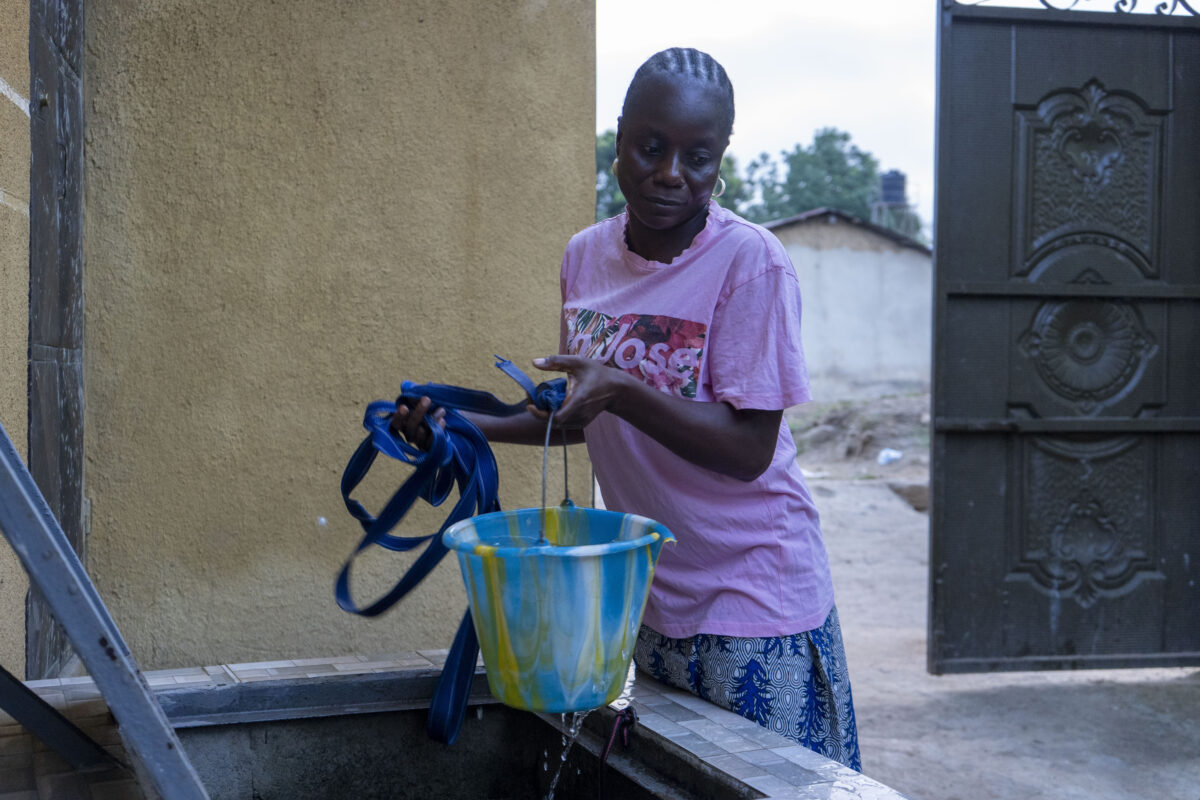
She's the mother of 2; the youngest is just 9 years old. She explains, "It's tough being away from family, but since there are no good schools in Zagné, I preferred to leave my younger one back home with my husband". I can almost hear her choke when she mentions her family. She hasn't seen them in months, even though the team at Earthworm encourages her to visit them multiple times a year. For a minute, my eyes welled up as I thought of my own kids and what it would feel like to be away from them for long periods of time. "I save my leave until the end of the year so that I have some time with family. It's not easy to see them just once a year."
She's thankful that we have good funding from companies and donors for this project, but she wishes there would be more funding for other projects across Cote d'Ivoire so she could be based closer to home.
But soon, Esther is back to talking about what drives her with her work.
"The communities have really adopted me and appreciate what I do. We maintain friendly ties. Observing the satisfaction on the faces of community members when they find solutions adapted to their plantations is particularly a moment of joy for me. This activity constitutes their main source of income, which makes these moments much more meaningful."
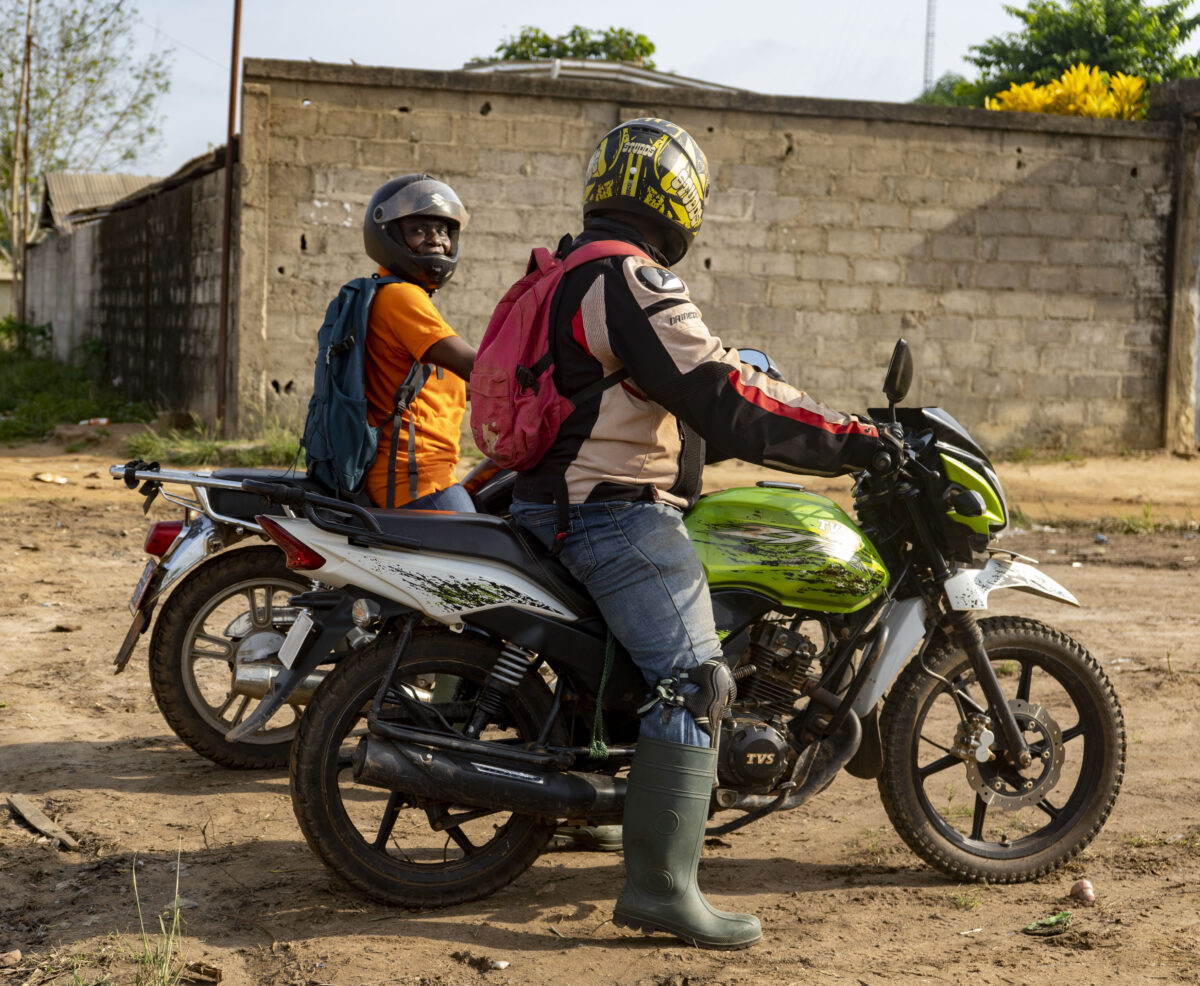
She rides off confidently on her motorbike as we follow her in the car. It's not the easiest road to navigate.
It wasn't the only time our hearts skipped a beat. But Esther doesn't think that she might be putting herself at any risk. It's part of what she does to get to the villages and the community members she believes she can help.
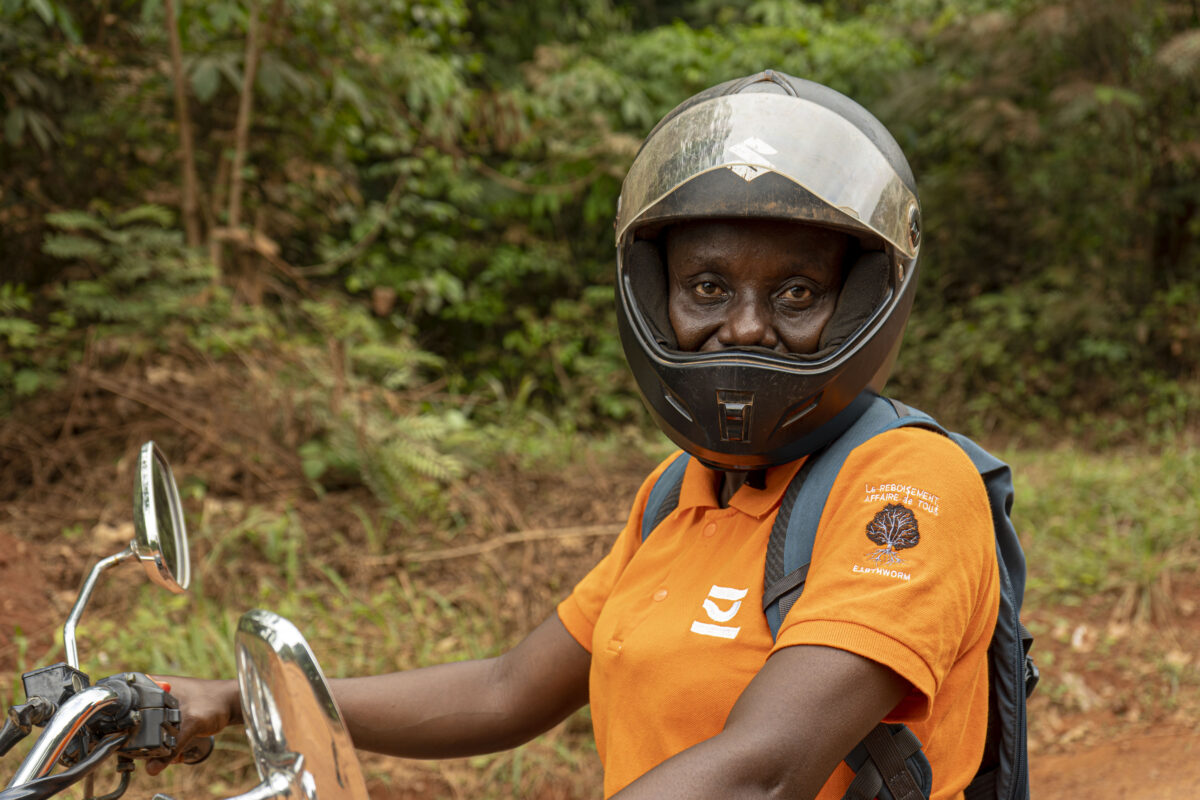
These aren't the only challenges she is posed with.
Once, at a meeting with the farmers, she was mistaken for being a forest guard. That's because we work closely with our partner SODEFOR and now OIPR (Office Ivoirien des Parcs et Réserves) on the protection, more specifically, patrolling of the forest. Where SODEFOR see illegal plantations, they destroy them. The farmers seemed wary of interacting with Esther at the meeting. Over time, she has built trust and gained the respect of farmers, both men and women. We visited the village of Amanikro, where both men and women farmers came to greet her.
I asked her if being a woman in the field was a disadvantage. I almost gauged her response. "No!" she says. “It's an advantage. Everyone wants to work with me. Communities are keen to listen to what I have to say."
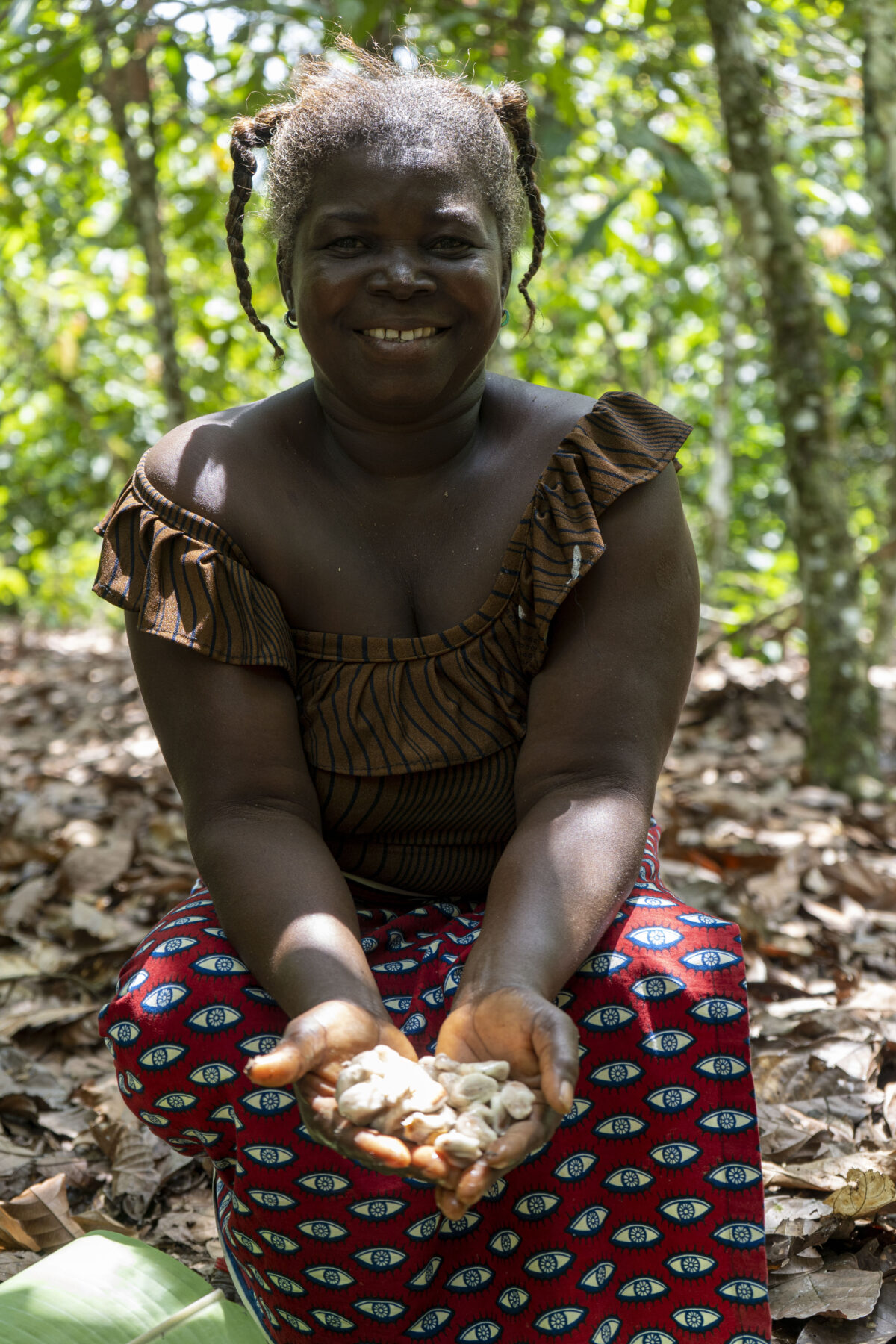
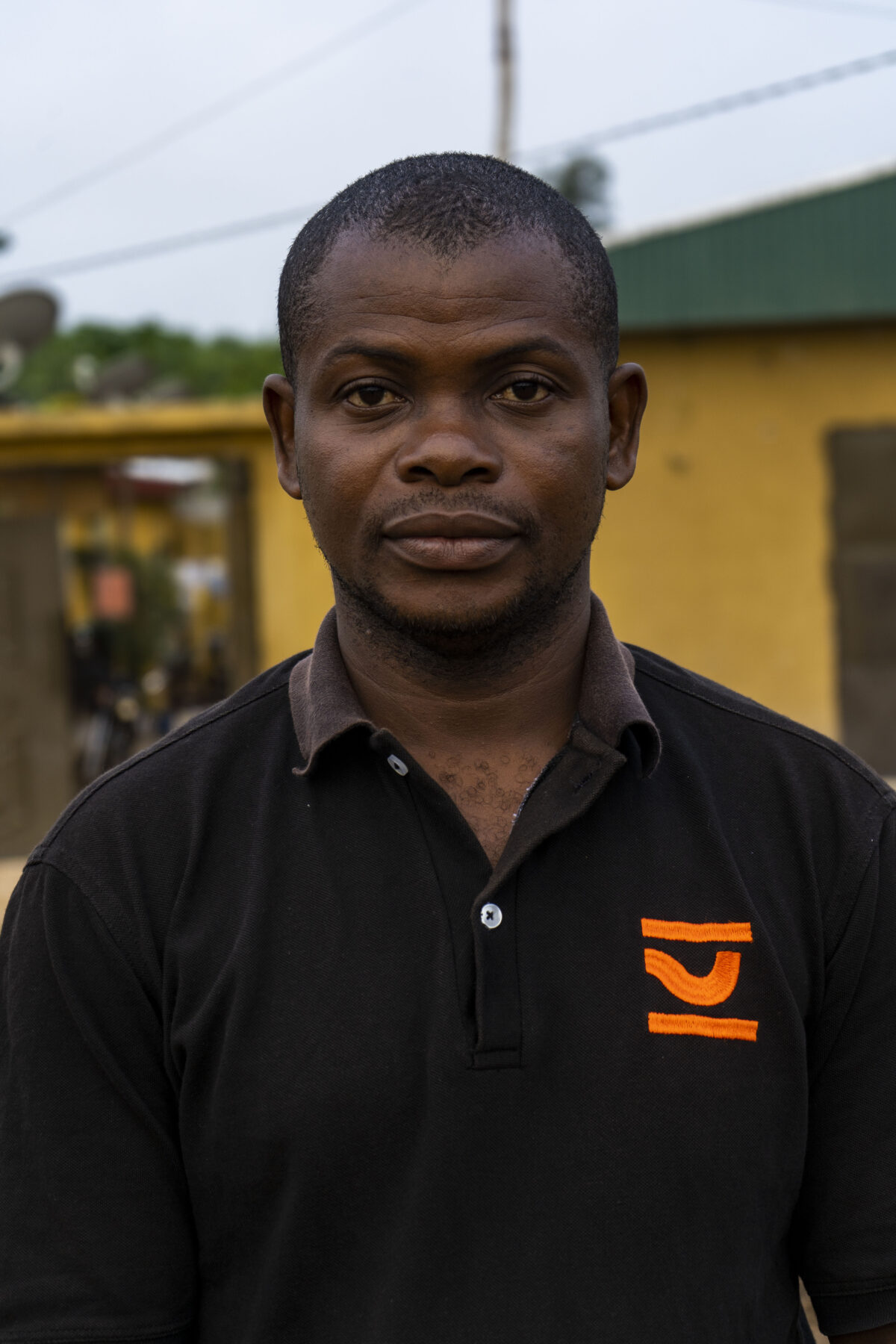
Dido works closely with Esther to maximise the production of cocoa with the farmers. Being an agronomist and having worked with large cocoa cooperatives, he is the best man for the job. He's also a linguist. While in the car on our return to Abidjan, he had many questions about the nuances of the English language. I didn't want to disappoint, but I told him I wasn't best placed to answer his grammatical dilemmas.
Last year, at one of the sessions Dido organised with the farmers to sensitise them on why they should not plant in the forest, one of the farmers said to him, "The forest isn't classified; it is open to us to go, and plant cocoa. That made me realise how much work needed to be done with these farmers and communities," he said.
I wondered how he goes about changing such a mindset. When I asked him, he responded, "It's simple!".
- You start with a conversation with the farmers, sensitise them on the big issues- which areas of the forest are sacrosanct and must not be exploited, what they can do in their own farms to improve yield and eventually how that will lead to earning a better living.
- Then comes the training on key issues. For example, how to produce fertiliser manually from organic elements on the farm, how to prune, and replant old cocoa farms etc.
- And finally, one-on-one coaching and following the activities on the farms. The key is good implementation.
And sometimes, when these three steps fail with a certain farmer, I start all over again."
These words stuck with me. That's exactly the mindset we must all have if we want to bring any change to the world.
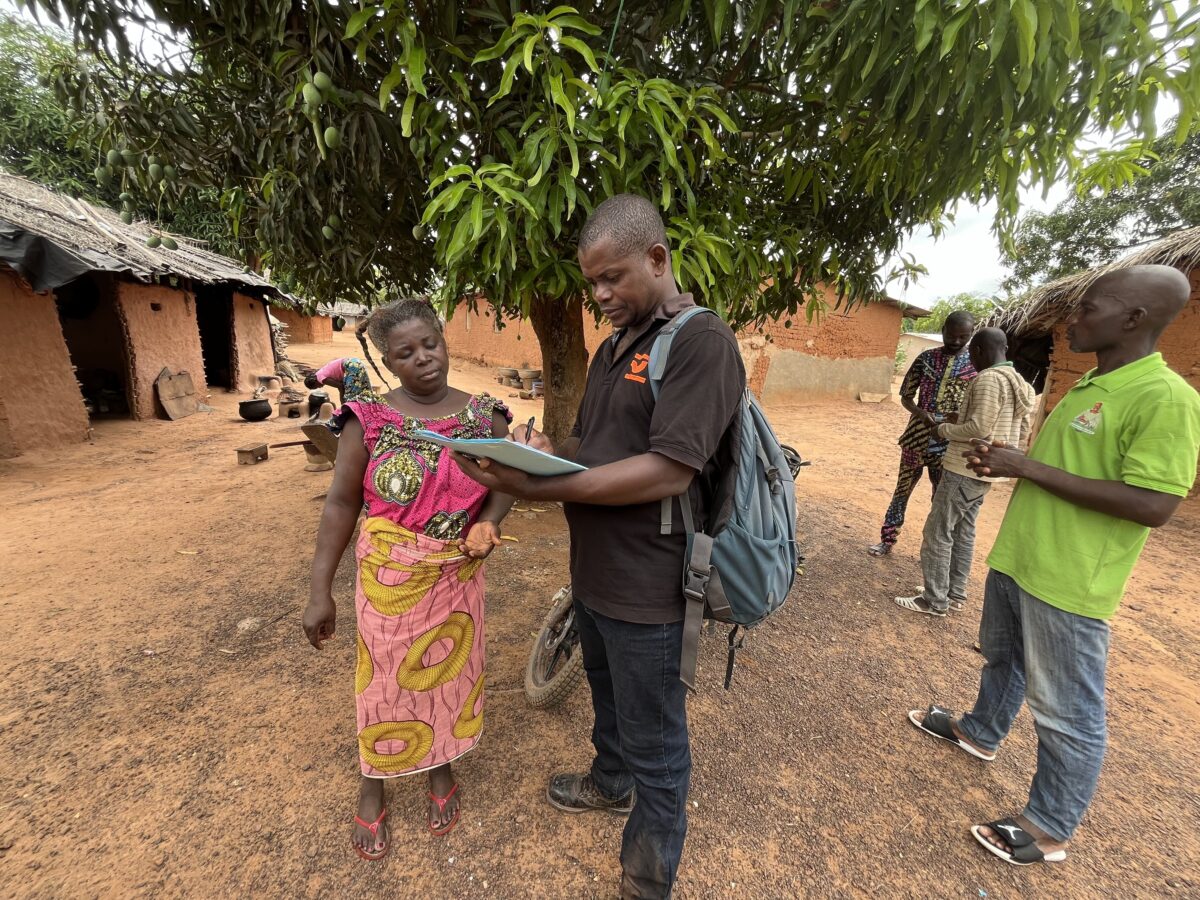
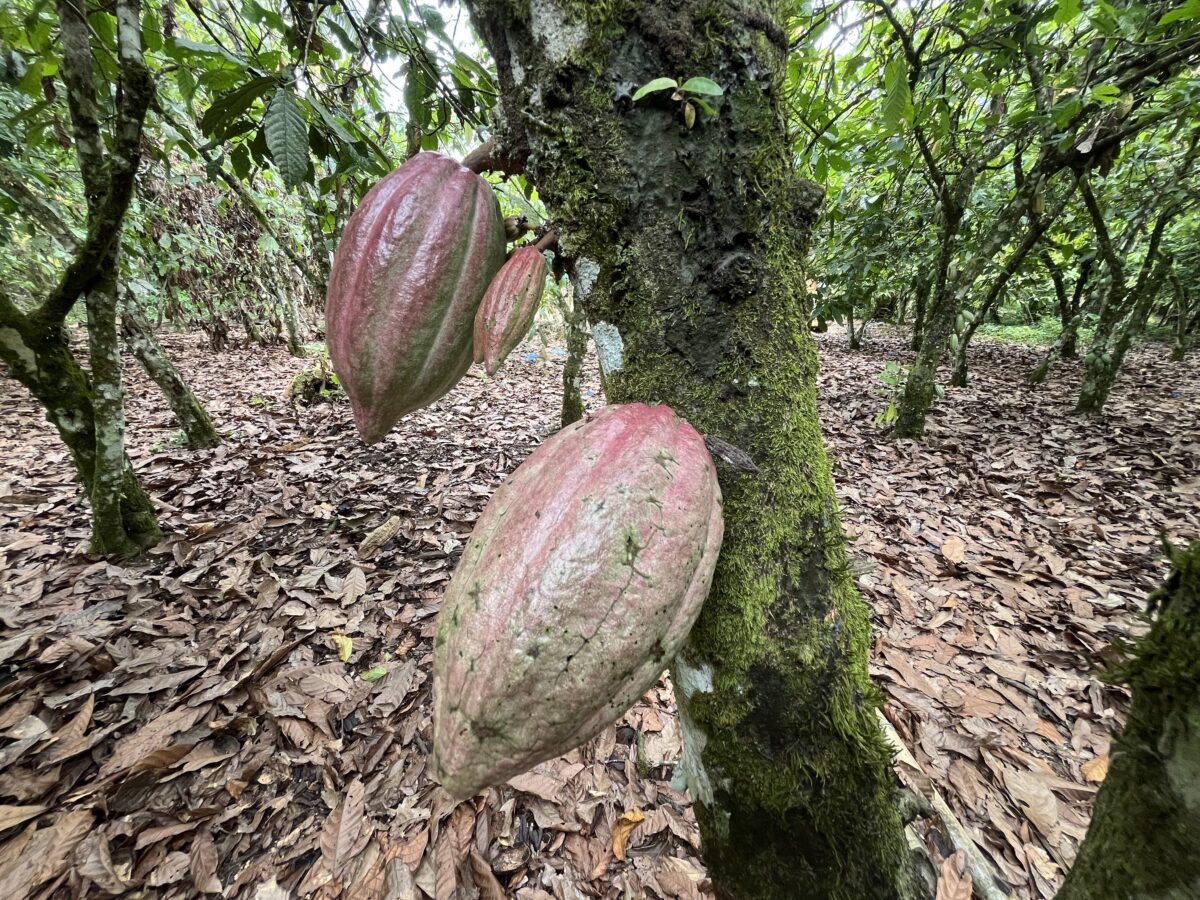
Today, Earthworm is looking at doing agroforestry across at least 100 hectares in just the year 2024 in Cavally. Partnering with Touton, a leading agro-industrial actor with subsidiaries from the region, we aim to accelerate agroforestry by doing it over many thousand hectares.
Dido's role remains to identify farmers by community in these 100 hectares. Then he has the task of mapping out the number of trees that exist in this area. "42 trees per hectare is what we need to have. These can be fruit trees, forest tree species or trees that provide timber. Basically, trees that provide shade under which the cocoa can flourish," he says.
These trees protect the cocoa trees from the harsh sun. The leaves provide fertilizer, and the roots prevent soil erosion.
I can sense the excitement as Dido continues elaborating on how these 42 trees in one hectare must be separated with 15-20 meters between them. Cocoa is planted between these spaces. Cocoa trees, too, must respect some specifications in meters. We work with our partner ICRAF (the International Centre for Research in Agroforestry) to determine these specifications and implement them. "2.5 meters distance between each tree in the row, and 3 meters between the columns. If the trees don't respect this distance, we must have a tough conversation with the farmer about cutting some trees."
It's not an easy conversation explaining to the farmer that he must lose some trees and the yield linked to those trees. But Dido isn't fazed. He believes the farmers will see results in 8-10 years' time. "It's a matter of patience," he says.
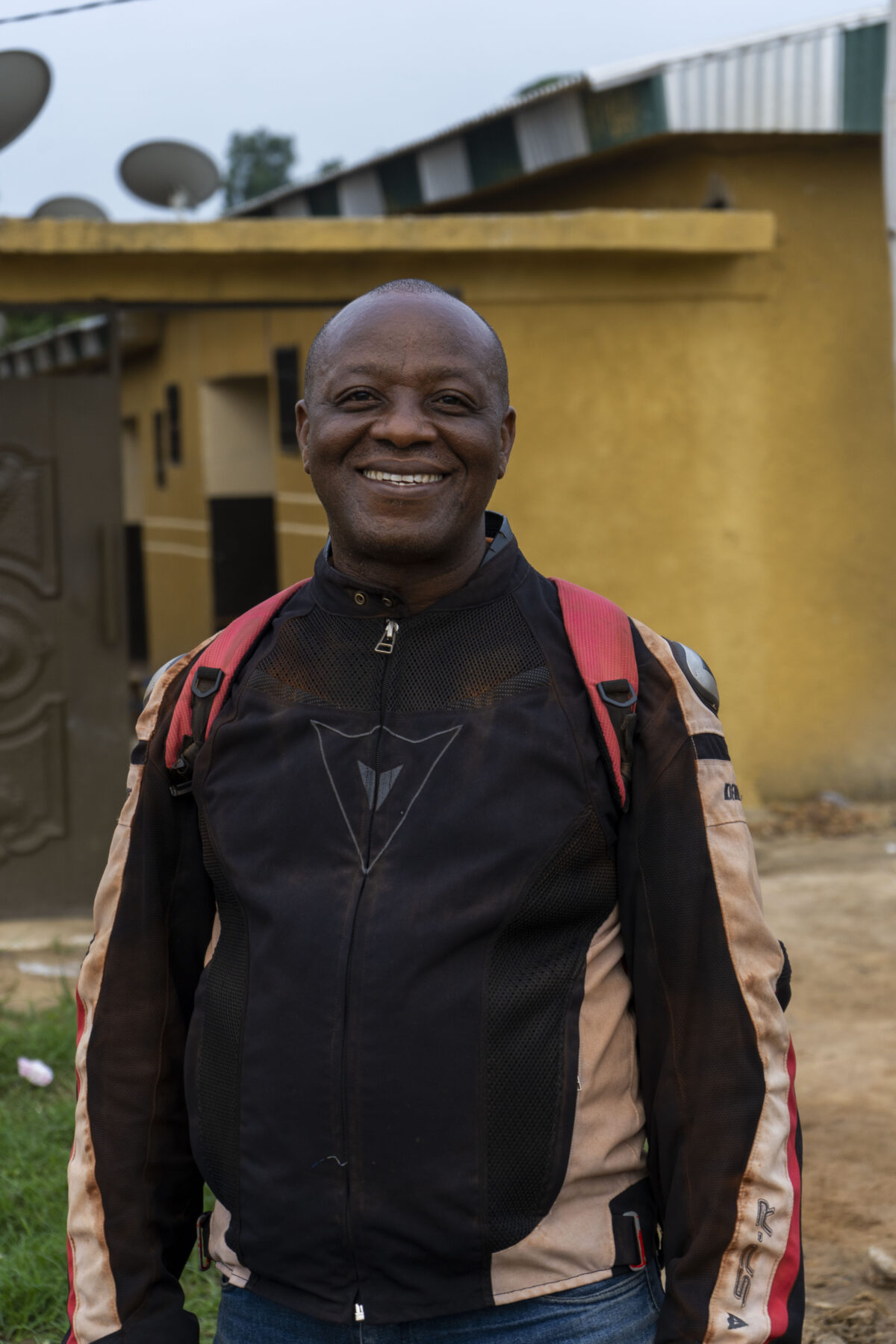
"The man with the big belly," teases Dido. That's what they call Moise. In his leather gloves, jacket and knee pads, even in the sweltering sun, he looks like a movie star. He rides his bike so fast that we can barely keep up with him in our 4x4.
He is the big man in our team who works for the betterment of the children in these communities.
His worries are about sending kids to schools, them having time at home to study and ensuring girls too are being sent to school.
Last month, Moise (for Earthworm) organised a birth certificate ceremony in the villages of Djidoubaye to hand over birth certificates to 250 children.
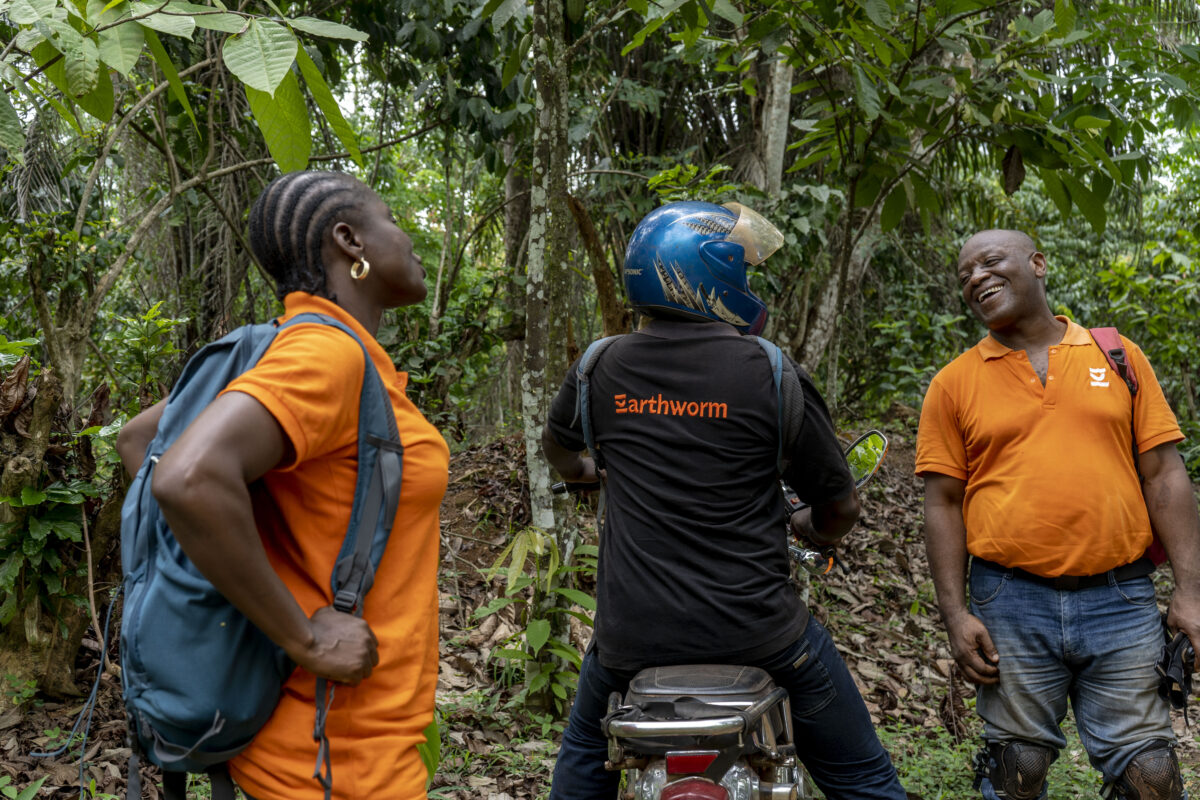
This was in partnership with another organisation called ICI (International Cocoa Initiative). Our counterparts at ICI are in close contact with the communities in Cavally. And they help to identify communities that grapple with issues that need our intervention. In this case, when children take an exam to go from primary to secondary school, they must provide a birth certificate. Many children drop out of school because the parents are unable to provide this document to the school authorities. Some will begin working on cocoa farms as labour.
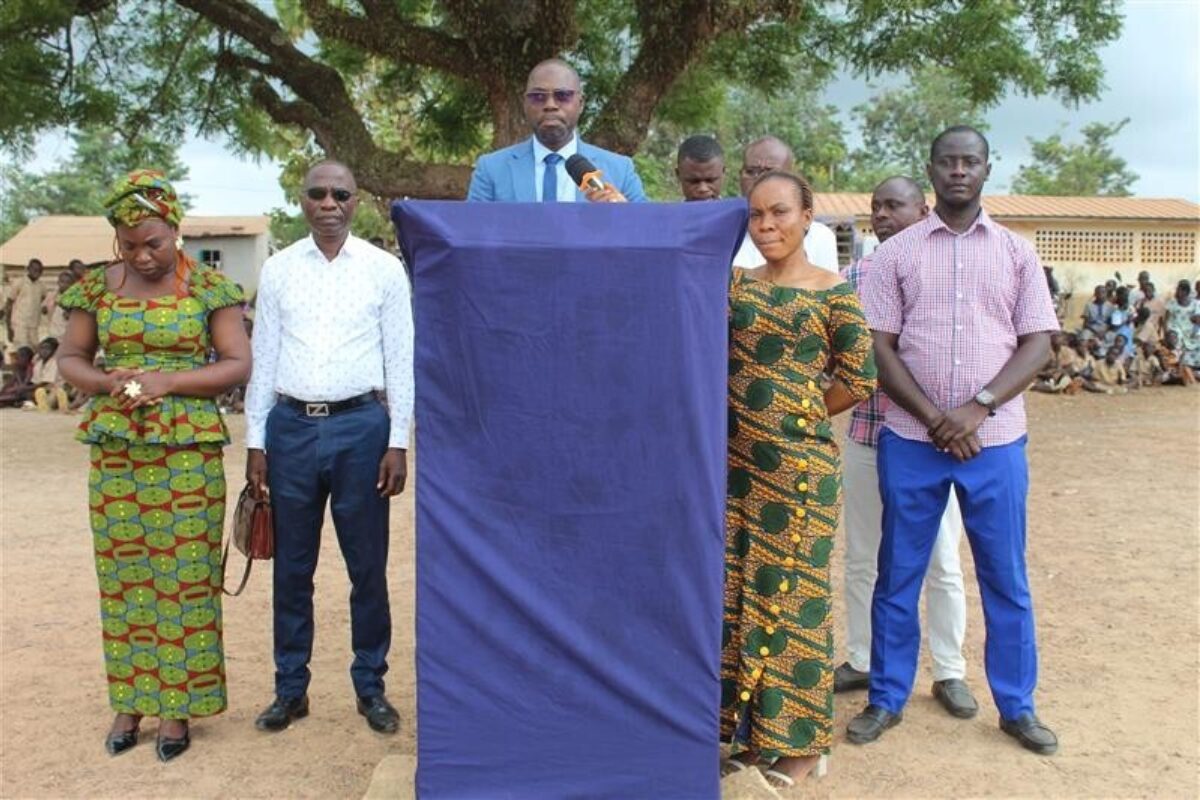
Today, 3,875 kids in primary school in Cavally and around the Tai National Park don't have birth certificates. Moise knows he has much work cut out for him.
Moise is also responsible for gaining an understanding of the origins of cocoa in Cavally. It's called traceability. With so many cooperatives present in the region, he has to define a process by which he can map out which cooperative is linked to the supply chain of which big agri-business or brand.
**
There's a lot else I've learned on this two-day trip from many other inspiring people - our own staff but also farmers. I've learned about our work on farmer income diversification, where we've worked with 10 farmer groups to start small businesses such as banana nurseries, beekeeping, and setting up vegetable and tailoring shops. We're also working on reforestation activities with these communities and SODEFOR.
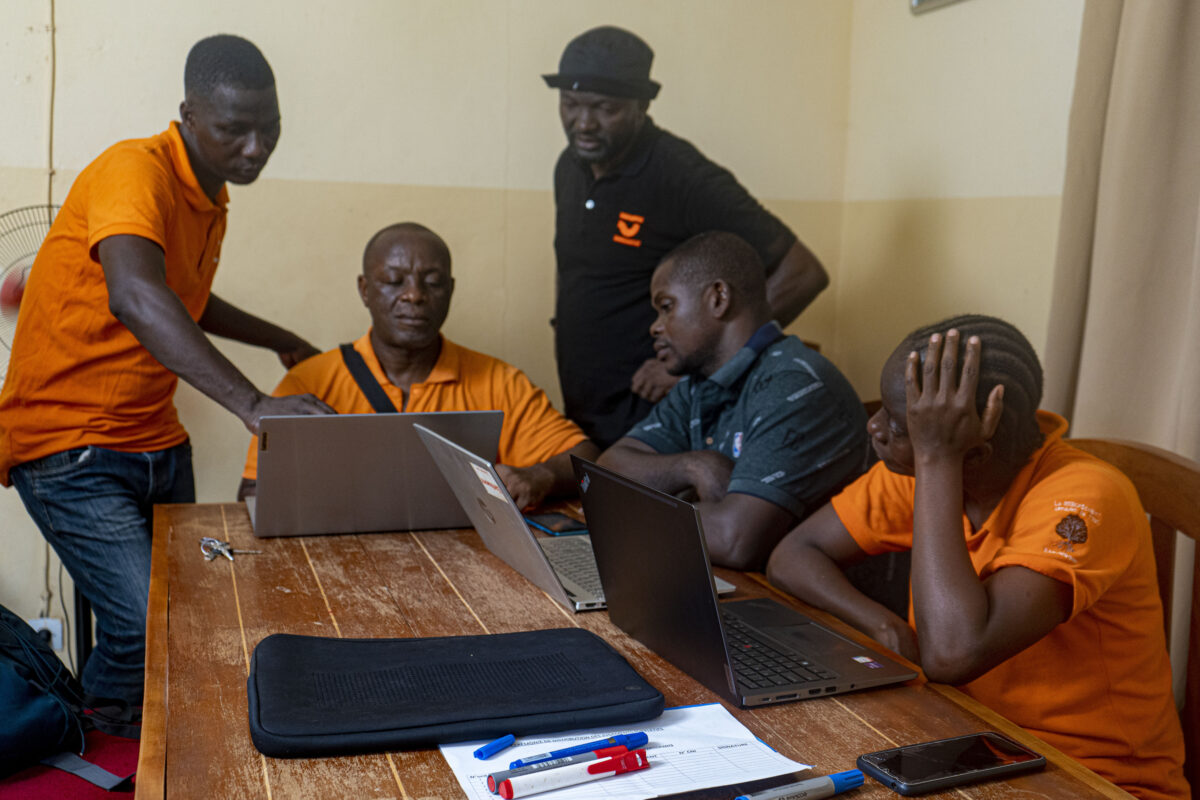
I've quizzed our field teams all day. It's past 7 pm. Finally, it's their turn to ask me questions. They have many questions about how we are communicating globally, but they also have ideas that they believe will help them on the ground in the implementation of this project. They asked how they could have a bigger voice in some of the conferences and coalitions I mentioned above. They want to transmit what happens on the ground to the world and communicate globally, but they also have ideas that they believe will help them on the ground in implementing communication globally openly and truthfully.
I asked at the beginning why we should celebrate our people on the ground?
It's because despite their personal challenges, being thrown into the unknown and facing failure multiple times, through grit, determination, and patience, they are able to realise their vision of a better world and bring about the change they want to see. Isn't that something we all can learn from?
That's why I believe there is hope for Cavally and many other forests around the world.
